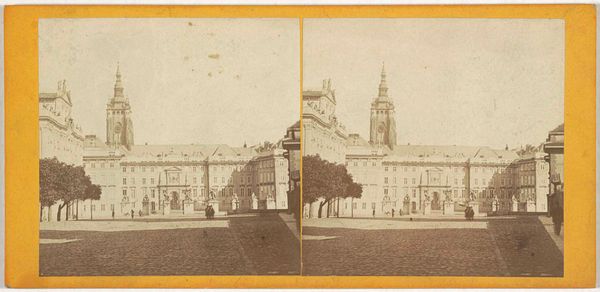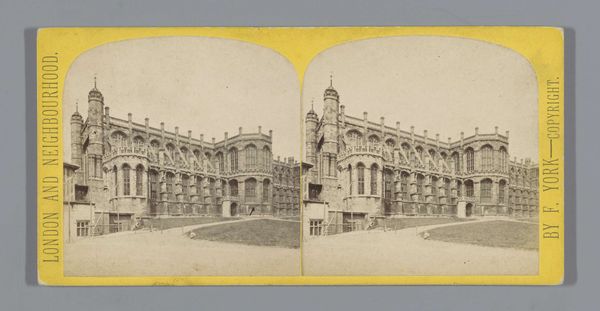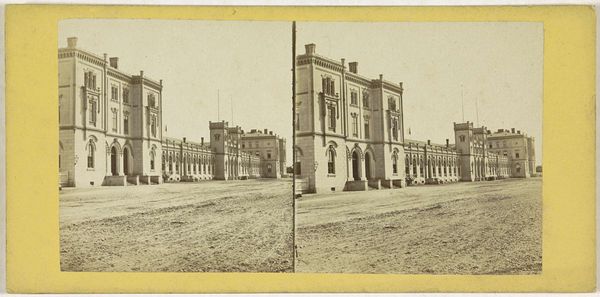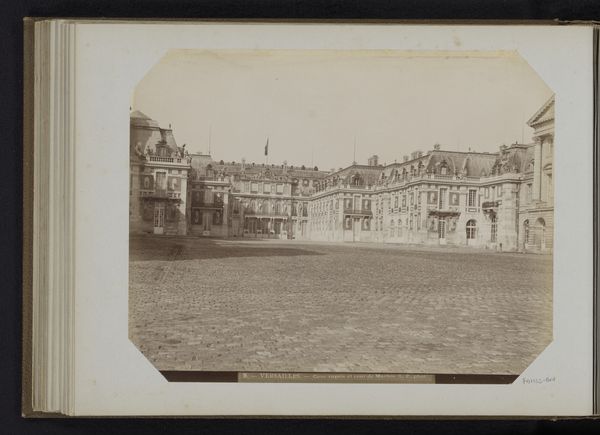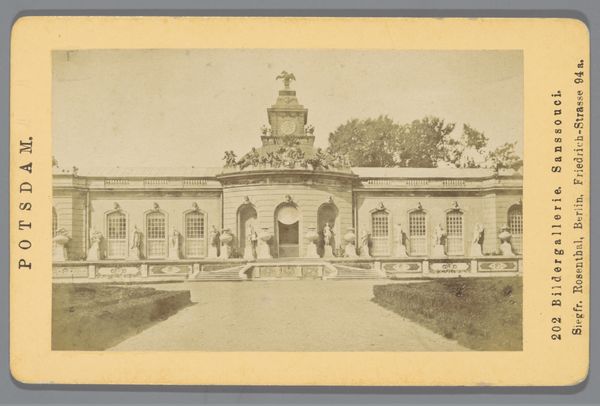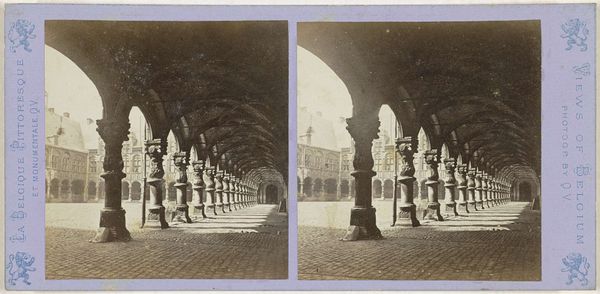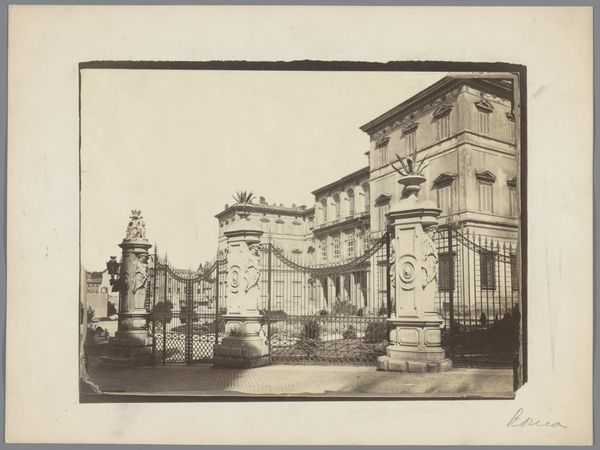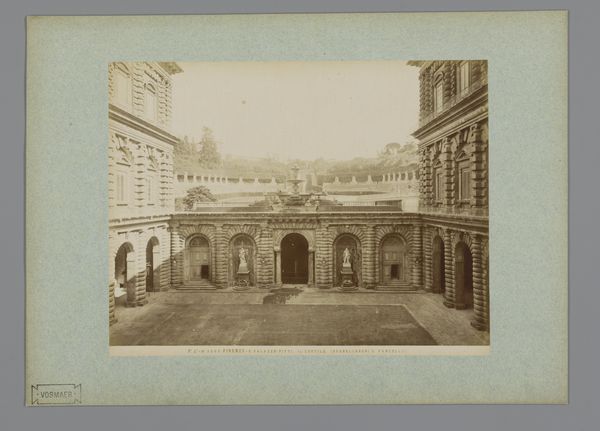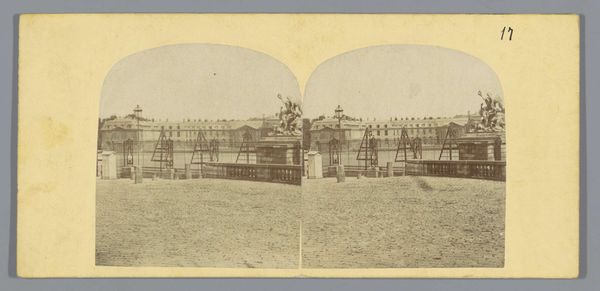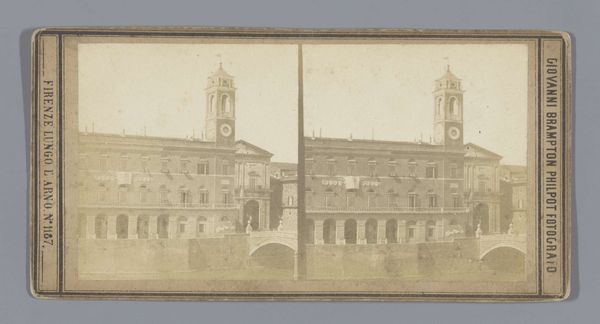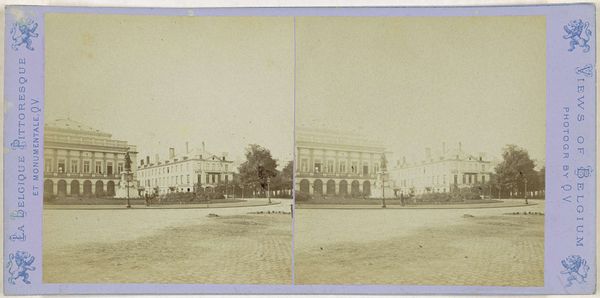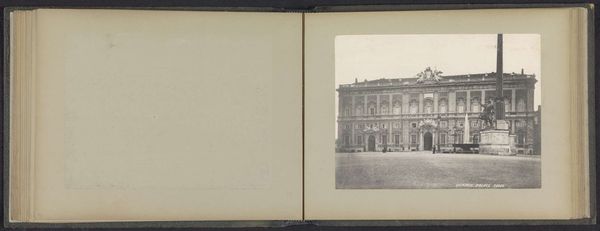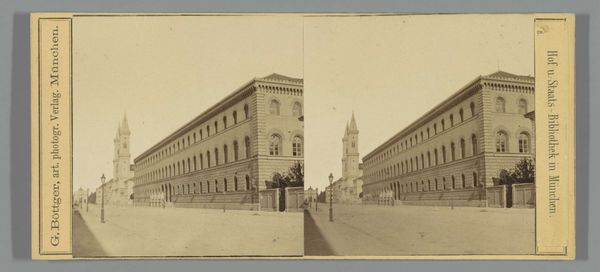
daguerreotype, photography
#
aged paper
#
toned paper
#
yellowing background
#
natural tone
#
neoclassicism
#
landscape
#
daguerreotype
#
photography
#
cityscape
Dimensions: height 87 mm, width 177 mm
Copyright: Rijks Museum: Open Domain
Curator: Looking at this cityscape, I am immediately struck by its sense of austere grandeur. The muted tones lend it an air of solemnity, a stillness that makes you wonder about the silent narratives within the buildings. Editor: Indeed. We are observing "Praagse burcht, Hradčany, Praag," a photograph by Aimé Civiale dating back to between 1861 and 1870. It is presented in the daguerreotype method. Viewing it now, I can’t help but ponder what it communicates regarding representations of power and class structures during that era. What was Civiale attempting to convey by positioning this monument as such a stoic feature of Prague’s landscape? Curator: Well, I see layers of symbolic intention at work here. Take the steeple dominating the composition: It is not merely a structural element but an aspiration reaching for the heavens, embodying both spiritual and secular authority, pointing back to deeply seeded cultural and historical meaning systems. Even in this seemingly objective format of early photography. The question might be, how does it solidify the power relations of its day? Editor: Absolutely. And think about the open square, the foreground—presumably public space, yet depicted as remarkably devoid of people. What are the politics of depicting the lack of human presence, and emptiness when a vital cultural structure like this is recorded? Is that the representation of state authority silencing dissenting voices or claiming power for the silent regime? Curator: Perhaps Civiale intended to capture the idealized essence of Prague Castle, dissociating it from the complex social realities of its time. What appears to us as stark may have been perceived by his contemporaries as a potent representation of national pride. What are the ethics of memorializing structures built upon inequalities? It forces us to contemplate our own complicity in inherited power dynamics. Editor: True. While you see this more symbolically, I am drawn to the practical elements here. Think of the transition between architectural classicism and what photography enabled, for example. The ability to make places more accessible via photographic processes must have been socially impactful, while probably not intended that way by the maker, Civiale. This picture is both a technological marker and artistic documentation, revealing its impact to society in unexpected ways. Curator: Seeing the Castle, as more than merely architectural details opens us to consider cultural endurance as we interpret and question history. I am deeply grateful for the new way this perspective shines a light upon inherited legacies of place and structure. Editor: And for me, to contemplate what images we make today that may serve unexpected audiences in decades or centuries to come is humbling. Every captured moment holds stories far beyond the original intent.
Comments
No comments
Be the first to comment and join the conversation on the ultimate creative platform.
